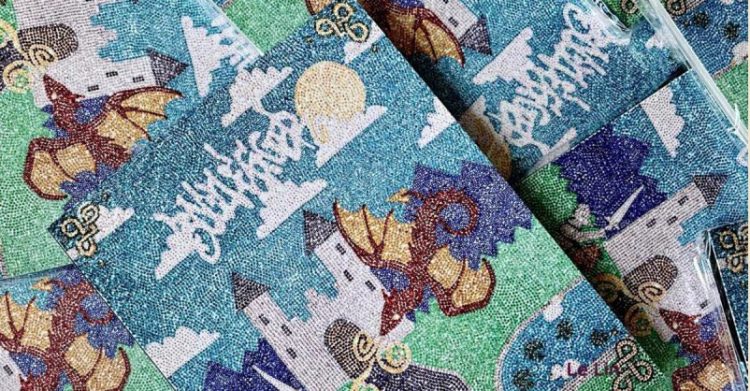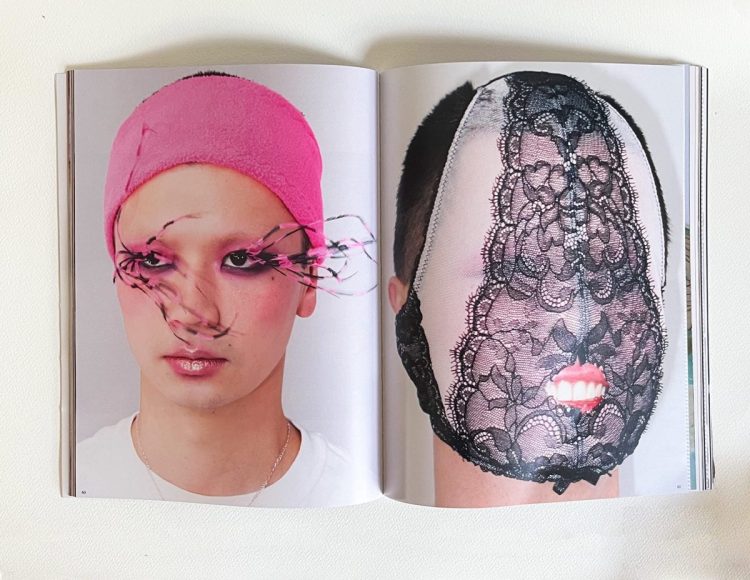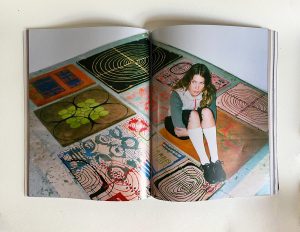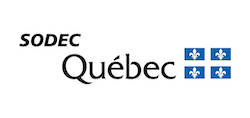Volume 7 MTL: Bootlegger Magazine : Promoting Montreal Underground Culture
Founded in 2021 by Claire Lamarre-Niemi, Bootlegger Magazine was created to provide a space for emerging artists in Montreal to showcase their work without restrictions. Bootlegger Magazine is an effort to value creative youth beyond the confines of traditional art institutions.
Guided by a playful, eclectic and contemporary vision, the magazine works to present a dynamic body of work. Bootlegger encompasses a variety of styles and mediums, focusing on those often overlooked by traditional publications. From painting to nail art, textiles to tattoos, graphic design to ceramics, Bootlegger advocates for inclusivity and celebration, and aims to archive today’s artistic zeitgeist. It immortalizes the work of promising young talent outside the confines of the digital world.
The following text is an edited transcript (translated from the original French) of a discussion that took place as part of the Volume 7 MTL art book fair and conference on October 6th, 2024, in Montreal.
Orane Thibaud: So what year did this Bootlegger adventure begin?
Hind Saher: The first one came out in 2022. But we started building the project in 2021.
Orane Thibaud: Was this a “Covid project?”
Claire Lamarre-Niemi: 100 %. Basically, the idea came to me because I was feeling a huge distance between everybody. And particularly among artists; it made me realise [that] I knew so many extraordinarily talented artists who didn’t have a physical space, who I didn’t see anywhere other than on Instagram.
Hind Saher : Who were also missing out on a lot of jobs. These are freelance artists, many of whom were out of work. Like graphic designers who create flyers for events, they weren’t getting any work. So a lot of people ended up relying on social media to share their art.
Claire Lamarre-Niemi: That’s also why it was really important for us to make something physical. On Instagram, things go by so quickly. Seeing art in a book format I think makes us take more time to really look at everything and then remember it.
Hind Saher: And also to make it feel more ‘official’. Because a lot of these artists don’t necessarily have the space to create a permanent presence or to physically exhibit their art, given that they are more “underground” artists.
Orane Thibault: I also wanted to get to the origins of Bootlegger. How exactly did the project come about? Had you been thinking about it for a long time?
Claire Lamarre-Niemi: So I was working in a restaurant and the idea came to me during one of my shifts. And I got off work at maybe one in the morning and then immediately DM’d and texted all the artists I knew with my idea. I am the most impulsive and ADD person on earth. I think I contacted like 175 people, it was absolutely ridiculous. Just seeing who wanted to be a part of it, who wanted to do what. Everyone was so excited. I had so many great responses.
Hind Saher: It was really good timing too, because it felt like things were starting to open up, the end of lockdown was in sight. The first launch we did was in May 2022, which I think was the same month they lifted the curfew.
Claire Lamarre-Niemi: We were one of the first, if not the first, magazine in Montreal that was more accessible, that was in our circle, and that was really focused on visual art.
Hind Saher: And it was mediums that aren’t necessarily considered “high art,” or mixed mediums you don’t often see together. Whether it’s a tattoo artist or a make-up artist… The magazine invites them to give a title to their work, to talk about their medium, their practice.
Orane Thibaud: You talked about your editorial project to immortalize what’s happening in the digital world. How do you see this movement, these young people making art in Montreal?
In fact, my question begins with you personally. Are you chronically online?
Hind Saher: Absolutely. I’ve discovered so many artists [and] so many mediums that I didn’t know about, that I couldn’t have known about if I only stuck to what’s shown in art institutions in Montreal.
Claire Lamarre-Niemi: Very true. I think that through the Internet, there are really fewer restrictions and people let themselves go.
Hind Saher : Because you can find your niches.
Claire Lamarre-Niemi: And despite the fact that there’s just so much content that it’s a bit difficult to manage, I have the impression sometimes. Or to stand out from the crowd.
Hind Saher : I think that’s been one of the magazine’s values, or motivations. There are artists, there are art forms, styles or mediums that just get validated mainly through Instagram. They may have a big following, they may have a lot of engagement, and people who will consume their art, but they aren’t necessarily able to translate that into real life.
Orane Thibaud: But in terms of underground art in Montreal, where can you find it? Is it mainly online, or are there other places you look for art?
Hind Saher: I think there are definitely subcultures, there area number of places in Montreal where you can find what you find online.
Claire Lamarre-Niemi: But I think we’ve inspired – or at least I like to think so – a bit of a wave of re-emergence of the art magazine.
Hind Saher : It’s a medium that was almost considered obsolete. Now that so much is available online, there’s often not a need to have physically copies. So the value of the magazine was to offer a slightly more traditional format. You don’t consume in the same way. It’s curated more carefully.
Orane Thibaud : Related to that, how do you choose your artists ?
Hind Saher: It started with people more or less in our social circle.
Claire Lamarre-Niemi: There’s definitely a common thread running through our aesthetic, but it’s also really important for us to have different looks and styles.
Hind Saher: People who push the boundaries of their medium, who re-contextualise their medium.
Orane Thibaud: Are they all artists from Montreal?
Hind Saher: They’re people for whom Montreal was an integral part of their practice, or who made art in Montreal at some point.
But No. 3 is the first time we’ve showcased an artist from Toronto because she was doing a show in Montreal that fell on the day after our launch. We also wanted to give the opportunity to represent artists who aren’t just visual, because that’s the limitation of doing a printed project.
Orane Thibaud : How do you navigate the underground scene? Do you sometimes approach artists who are better known?
Claire Lamarre-Niemi: I think we do have a mix, but of course the term ‘underground’ is really important to us. It’s pretty subjective. But most of our artists are relatively unknown. We’re more into emerging people.
Hind Saher: Because we represent particularly young people. Therefore, there’s a playful aspect, there’s a lot of people who experiment with their mediums.
Orane Thibaud: Where do you position yourself in relation to the institutionalized art world? What do you feel is not sufficiently represented institutionally and that you’re trying to give a platform with Bootlegger?
Hind Saher: There are so many mediums that are under-represented. Montreal has this status as an artistic city, but I don’t think that the city’s resources –
Claire Lamarre-Niemi: They are really limited, for one thing. But you also see it on Radio-Can and everything; I have the impression that the choice of artists is very concentrated in older francophone communities, which are mainly white.
Hind Saher : There’s a generational gap as well, I think. As people who’ve grown up in the age of the internet, we’ve had access to a lot more options in terms of art. You can really create your own little world on the internet, as opposed to just going to see what exhibitions are on at the Fine Arts Museum.
Claire Lamarre-Niemi : I’d like people our age to be trying out different things and opening up the conversation of like, What is art? What are the limits, the boundaries of mediums? And what is respected and considered as “high art?”
Orane Thibaud: Is it important for you to represent what’s current in your scene? How would you describe current emerging arts?
Claire Lamarre-Niemi: I find that a lot of art is incredibly referential, especially to the digital world; even my art personally is referential to popular culture mixed with memes — a lot of mixing.
Hind Saher: It’s an authentic representation of your lived experience.
Claire Lamarre-Niemi: I also think people are having a lot of fun with art these days. I get the impression that they’re taking it less seriously. In each edition, we have games, or we’ve done a yearly horoscope. And I think we also just want to explore the medium. How we can push printed media, which sometimes feels really static. I think there are a lot of original ways to explore that.









